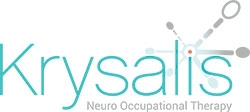Simplify school transitions with the Eisenhower Matrix

As your child navigates school transitions, equip your family with something you can use for life: a top-notch management tool that will transform your organisational skills.
Parents often feel overwhelmed by the extensive list of tasks they need to manage, particularly when they are also supporting their child's educational needs.
But as a parent to children who might have neurodivergent needs, or as an adult with neurodivergence yourself, being able to structure your routine and ideas during this transitional period is key.
So, the solution to juggling the weekly shop, work, and helping your family transition into the new school year? The Eisenhower Matrix.
Dwight D. Eisenhower, the 34th President of the United States, created this task management tool in 1961 in order to set himself up for long-term success as a President and military leader.
 I have two kinds of problems, the urgent and the important. The urgent are not important, and the important are not urgent.
I have two kinds of problems, the urgent and the important. The urgent are not important, and the important are not urgent. 
How it works…
The matrix divides tasks into four quadrants that depend on their importance and urgency. If your child is lacking structure in tackling their mounds of homework, or if you’re struggling to order your thoughts while your child faces a period of transition, the matrix breaks these struggles down into four sections.
Do First: These tasks are both important and urgent and should be completed immediately. Examples include shopping for school supplies and uniforms or ensuring your child knows their schedule for the first day.
Schedule: These tasks are important but not urgent. You should plan a time to do them. These may include planning times of ‘rest and digest’ for your child after school, or scheduling appointments around your child’s school day.
Delegate: These are the tasks that are urgent, but not as important to you specifically. For example, asking a grandparent to pick up your child from school while you’re working, or asking a partner to support your child in a subject you’re not well-knowledgeable in.
Don’t do: These are neither important nor urgent tasks. Avoid them if you can! That includes doom-scrolling on social media or binge-watching TV shows that hinder progress of tasks.
 It is a good cognitive strategy to plan and structure your thoughts and tasks. There can be a lot of guilt as a parent around forgetting things, like a dentist appointment or school supplies your child needs. The Eisenhower Matrix helps.
It is a good cognitive strategy to plan and structure your thoughts and tasks. There can be a lot of guilt as a parent around forgetting things, like a dentist appointment or school supplies your child needs. The Eisenhower Matrix helps. 
Nichola Shellum, Occupational Therapist
Now you can personalise it…
The Eisenhower Matrix is a useful tool for both you and your child to sort tasks by priority, maintain organisation, and protect against stress and the risk of burnout. This can be used to ensure a smooth transition back to school or used throughout the year to manage workload.
The Eisenhower Matrix is a flexible tool that can be tailored to fit different cognitive abilities and goals, making it easier to manage tasks.
Here is how you can personalise the matrix for your family:
- Using Visual Aids: Enhance the matrix with colours, symbols, or images to facilitate quick understanding for your family. Encourage creativity in this process.
- Setting Realistic Goals: Be realistic about what you and your child is capable of. Have open conversations about what can be achieved. This makes using the matrix more manageable and less overwhelming.
- Modifying the Quadrants: Some tasks might not be possible to delegate, but they can be shared between you and your partner, or managed together to ensure they are completed efficiently.
- Regular Reviewing: The matrix is a guide, not a strict rulebook. Regularly review and adjust it to fit both you and your child’s needs. Encourage creativity and flexibility to keep it stress-free and effective.
An Occupational Therapist’s thoughts…
Occupational Therapist, Nichola Shellum, gave her thoughts on the Eisenhower Matrix and how it can be useful for neurodivergent families.
Nichola recommends following a process plan, such as mind-mapping and 'brain-dumping' on paper before structuring ideas and tasks into the Eisenhower Matrix. This process allows to reduce mental clutter and helps create a visual of everything that needs to be done, making it easier to prioritise and manage workloads.
 Having a plan and knowing how each person wants it represented is so important. Do you want visual aids, auditory reminders, or physical cues? As an Occupational Therapist we look at all these things in conjunction.
Having a plan and knowing how each person wants it represented is so important. Do you want visual aids, auditory reminders, or physical cues? As an Occupational Therapist we look at all these things in conjunction. 
Nichola Shellum, Occupational Therapist
Creativity is often a significant aspect of neurodivergent individuals. The need for structure can vary widely among individuals. For example, people with ADHD may find routines challenging, while those with autism often benefit from structured environments.
Therefore, this simple yet effective process can significantly reduce stress and anxiety, as it provides a clear roadmap of what needs to be done, allowing tasks to be tackled systematically in a way that is both manageable and effective for you or your child’s specific needs.
The Eisenhower Matrix can be customised to meet your family’s needs, whether preparing for GCSE’s or a child’s first day in a new class. When given careful consideration to your family’s needs, this adaptable tool supports everyone, reduces stress, and facilitates smoother transitions.
You can find a printable Eisenhower Matrix resource here: Eisenhower Matrix Resource - PDF
Happy matrixing!
Recently on talking heads...




